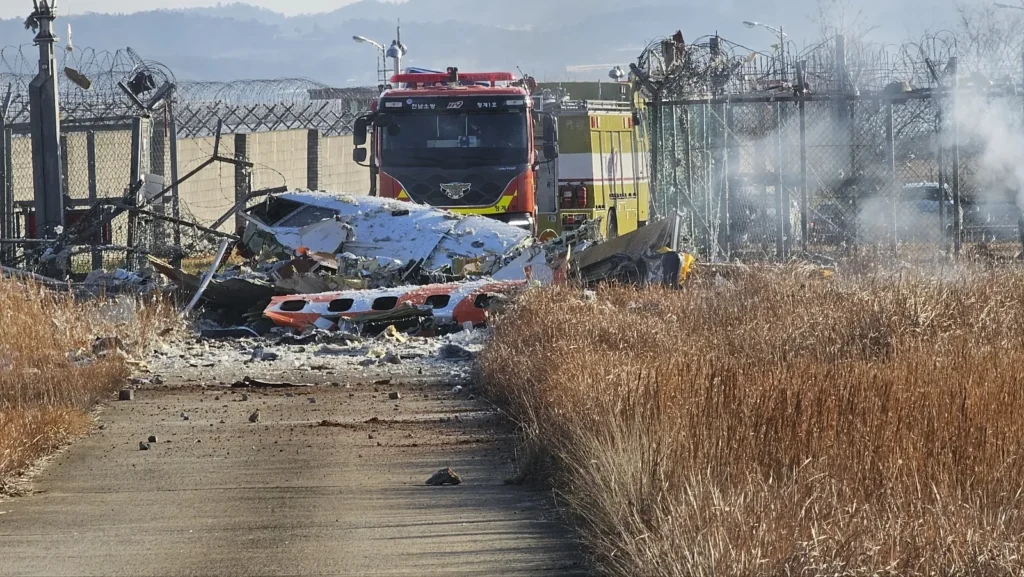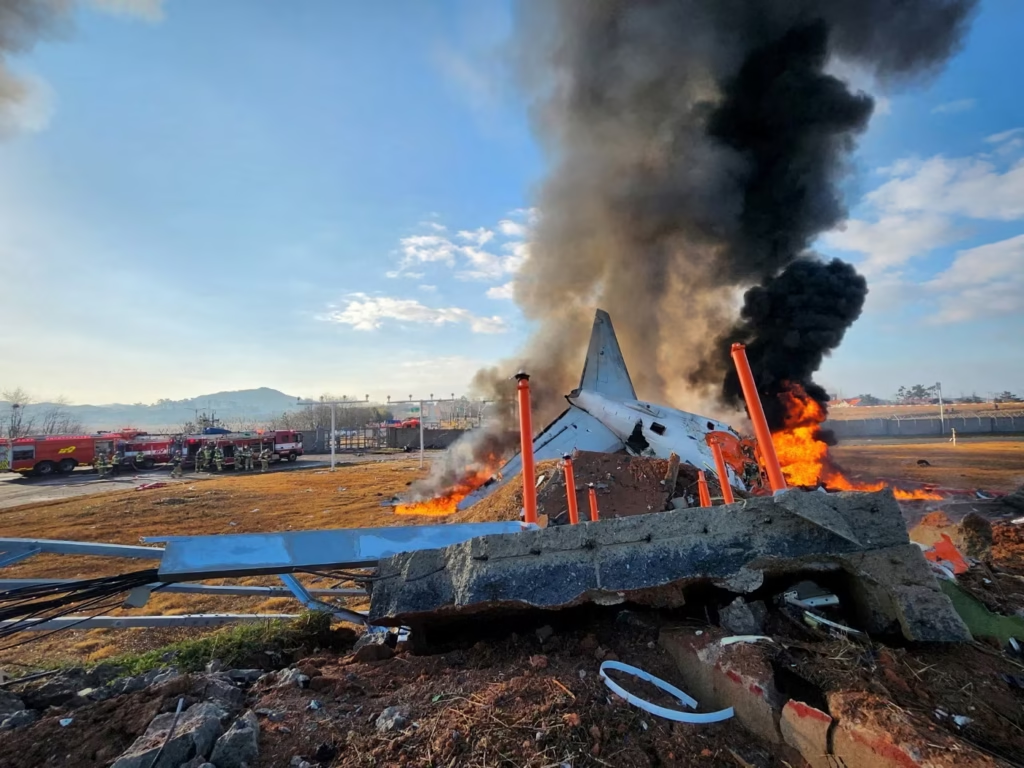A South Korean plane crash at Muan Airport killed 179 people after failing to deploy landing gear. Investigations are underway as the nation mourns one of its worst aviation disasters in decades.
Muan, South Korea — A devastating aviation disaster unfolded Sunday morning as a South Korean passenger jet crashed while landing, claiming the lives of 179 people. The Jeju Air flight, returning from Bangkok, carried 181 passengers and crew when it failed to deploy its landing gear, skidding down the runway at Muan International Airport before striking a wall and erupting into flames, local authorities confirmed.
Emergency responders rescued two crew members from the aircraft’s tail, but all other passengers and crew aboard the flight were later confirmed dead, according to South Korea’s Yonhap news agency. Among the 175 passengers were 173 South Koreans and two Thai nationals, along with six crew members, the transportation ministry reported.

A National Tragedy
South Korea’s acting president, Choi Sang-mok, who recently assumed office, called the crash a “grave situation” and pledged to uncover its cause and prevent future accidents. “We will do our utmost to cope with the damage,” he said at the crash site.
Local television footage showed thick plumes of smoke billowing from the wreckage of the Boeing 737-800, a twin-engine jet used extensively for short-haul flights. The transport ministry disclosed that the airport control tower had issued a bird strike warning shortly before the pilots declared a mayday. The crash occurred five minutes later.
Investigators have retrieved the flight data and cockpit voice recorders, while the pilot, a veteran with over 6,800 hours of flight experience, is being scrutinized as part of the investigation.
Airline and Manufacturer Responses
Jeju Air, a budget airline established in 2005, activated emergency protocols following the tragedy. In a televised statement, the airline’s president, Kim E-bae, expressed condolences to the victims’ families. He emphasized the company’s commitment to identifying the cause, stating that the 15-year-old plane had undergone regular maintenance with no reported issues prior to its departure from Bangkok’s Suvarnabhumi Airport.
Boeing, the manufacturer of the aircraft, said it was working closely with Jeju Air and South Korean authorities to understand the incident. The 737-800 model has been a mainstay of global air travel since its introduction in the 1990s, but recent scrutiny of Boeing’s safety protocols has renewed concerns about the company’s practices.
A Troubled Aviation History
South Korea’s aviation industry has seen significant safety improvements in recent years, yet the nation has endured several catastrophic air disasters. In 1983, a Korean Air flight was shot down by the Soviet Union, killing 269 people. In 1997, another Korean Air flight crashed in Guam, resulting in 228 fatalities. More recently, in 2013, an Asiana Airlines flight crash-landed in San Francisco, leaving three dead and 187 injured.
This latest tragedy is one of the deadliest in South Korea’s history and comes amid other aviation incidents worldwide. On Wednesday, an Azerbaijan Airlines flight crash-landed in Kazakhstan, killing 38 people. U.S. and Ukrainian officials have suggested Russian interference, while Moscow attributed the crash to fog and bird strikes.
Ongoing Investigations
The South Korean transport ministry announced that Muan International Airport would remain closed until January 1 as investigations continue. The disaster has left the nation in mourning, with calls for improved aviation safety measures and stricter protocols to prevent future tragedies.
This catastrophic event underscores the fragility of air travel safety and serves as a stark reminder of the potential consequences of mechanical or operational failures. South Koreans, and the world, now await answers as investigators work to determine the precise cause of this tragedy.



